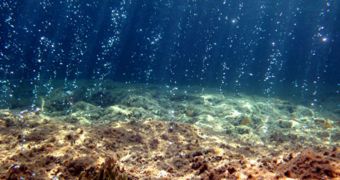As pollution levels continue to increase around the world, the amount of carbon dioxide making its way in the oceans is rising as well. Such high amounts of the chemical severely affect marine ecosystems, which are placed under increasingly intense strains.
Oceanic acidification is just one of these symptoms. In broad terms, the concept refers to a host of processes brought on by the synthesis of carbonic acid in Earth's waters. This chemical forms when carbon dioxide from the air makes its way into, and reacts with, water.
The main influence of this phenomenon is a decrease in overall marine pH levels. This shift affects nearly all animals living in the oceans. Even if not all directly affected, all species interact with, and depend on, each other for their survival.
The state of the ocean was the topic of a presentation given on February 18, at the annual meeting of the American Association for the Advancement of Science (AAAS 2012), in Vancouver, Canada.
Oceanic acidification threatens to kill species both directly and indirectly, and has the potential to put a massive dent in the biodiversity of waters around the world. This dent could then become self-sustaining, leading to additional imbalances appearing elsewhere in ecosystems.
A recent analysis by experts in the UK and the US revealed that the biodiversity of species is in sharp decline even now. They presented their conclusions on February 18, in front of colleagues gathered at the annual meeting of the American Association for the Advancement of Science (AAAS 2012).
The group argued that the damaging effect can now be seen in multiple species, not just those featuring shells or other types of calcified support structures. The latter were the first to be affected, since acid readily attacks chemicals containing calcium.
Data used for this study were collected from random sites off the coasts of Italy, Baja California and Papua New Guinea. These locations are used as natural laboratories, because they all feature underwater volcanoes, which significantly increase pH levels in the water above.
Right now, these regions of the ocean have a pH level of at least 7.8. This is the same value that the entire ocean is expected to display by 2100. As such, these regions provide an indication of what we should expect to see around the world.
“Coral and some algae are gone. And the sea urchins are gone,” University of Plymouth investigator Jason Hall-Spencer explains. He adds that the lower pH level makes fish avoid depositing their eggs here as well, Science News reports.

 14 DAY TRIAL //
14 DAY TRIAL //